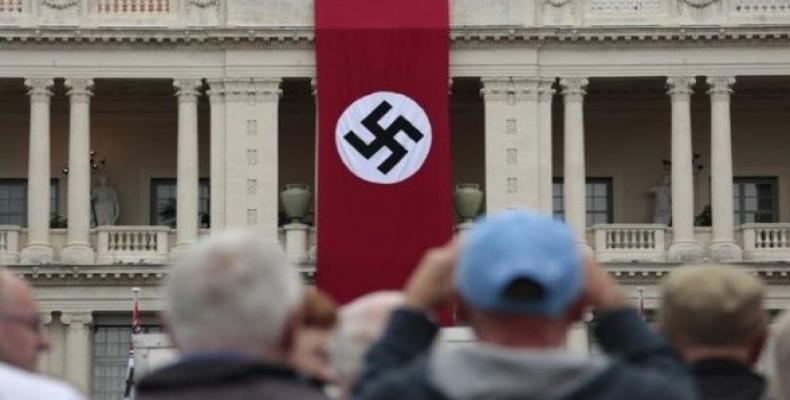Paris, September 24 (RHC)-- A new book and documentary have revealed the lengths to which the French wartime Vichy regime went to please the Nazis. The new research carried out by historian Laurent Joly and filmmaker David Korn-Brzoza uses previously unseen documents to show how the French police and top officials were willing collaborators in the rounding up of tens of thousands of Jews.
Joly's new book "L'Etat contre les Juifs" ("The State Against the Jews") uses a previously unseen register compiled by the French collaborationist police to target "foreign Jews" in France. Tens of thousands had fled to the country to escape the rise of anti-Semitism in Germany and Eastern Europe in the years leading up to the war.
Joly told AFP that Paris police had "one of the most sophisticated systems in the world to classify foreigners." Some 125,000 Jews were recorded in a roll based on the census the Nazis demanded in 1941 which Joly said has "curiously remained unknown until my research". It was this list which was used during the infamous Vel' d'Hiv roundup of 13,000 foreign-born Jews on July 16 and 17, 1942.
Men, women and children were dragged from their beds by French police and officials and taken to the Velodrome d'Hiver (Winter velodrome) near the Eiffel Tower before being deported to concentration camps.
"The Germans were not asking for the Jews who lived in the Vichy-controlled part of France to be handed to them," Joly said. "Vichy was always trying to demonstrate its goodwill towards the Germans," he said. "There were ways in which they could have resisted their pressure. But the policy of collaboration was a deliberate choice."
The film Joly made with Korn-Brzoza, "The Vichy Police", which was broadcast on French public television, has also obtained the only known photograph of the velodrome during the roundup. Taken by the Germans, it shows police vans lined up outside and officers milling around, and was later censored by the Nazis themselves.
The film also reconstructs the bureaucratic "mechanism" through which the Vichy ministers responsible for the police during the war collaborated with the Germans. The director said this was the first time anyone has tried to portray what happened through the lens of those who "put the Final Solution into action in France."
Using their testimony to the courts who judged them after the liberation of France, Korn-Brzoza shines a light on the roles played by Vichy's elderly leader, Marshal Philippe Petain, his prime minister Pierre Laval, and police ministers Rene Bousquet, Joseph Darnand, Pierre Pucheu, Marcel Peyrouton and Adrien Marquet.
Korn-Brzoza said through his dramatized reconstruction of the events we can hear Bousquet -- a friend of future French President Francois Mitterrand -- claim that it was he "who saved the French Jews and four-fifths of the foreign Jews" in France at the time. Laval claimed that he was "convinced that the Jews were being deported to Poland to create a Jewish state."
Joly said that Bosquet managed to escape execution even though he was head of the police "during the time of the worst repression... while both his predecessor Pucheu and successor Darnand were shot." He said the film's dramatic reconstruction of the events was about trying to "understand the psychology of these police chiefs," who were stuck in the logic of the system that was in place. "Nothing was made up," he insisted, everything came from transcripts of their interrogations and statements after the war.
The historian said "a fundamental and little known moment" which set the template for Vichy's willing collaboration was when its first interior minister Marquet accepted "that a Gestapo official would be given an office at Vichy" in summer 1940 — even though it was not a part of the terms of the armistice.
"That December the SS officer demanded totally illegally that two German political refugees, Rudolf Hilferding and Rudolf Breitscheid, be handed over to the Nazis," despite the fact that they both had visas which would have allowed them to escape to the United States, said Joly. "Both were sacrificed on the altar of collaboration by Peyrouton, Marquet's successor, who wanted to get into the Germans' good books," he added.
That decision, he argued, "is the beginning of this mechanism of police collaboration" which eventually ended up with 40,000 Jews in 1942 alone being handed over to the Germans.
Depth of French police collaboration with Nazis revealed


